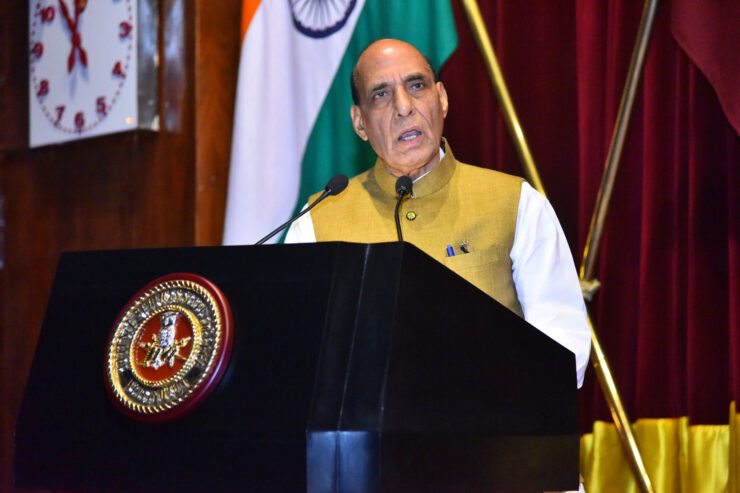
New Delhi: From theatre commands to integrated battle groups that will make the military more efficient for modern warfare, to the role of women and tours of duty that could allow citizens to join the army for three years, Defence Minister Rajnath Singh has put out a blueprint of structural reforms that could be the future for the armed forces.
In a talk on ‘Defence Reforms in Shifting National Security Paradigm’ in Defence Services Staff College, Wellington, Tamil Nadu, Singh gave an overarching view on the way forward and the proposals under consideration to bring about structural changes needed in the forces.
Underlining the need for reforms that will aid in putting in place a strategic vision, he referred to the current situation in Afghanistan. “In these circumstances, every country is forced to rethink its strategy. QUAD was established keeping in mind these situations,” the defence minister said.
While there is still no consensus on how the theatre commands will function, the defence minister said the discussions on its implementation have been fast tracked. The newly created Department of Military Affairs headed by the Chief of Defence Staff is working towards the creation of Joint Military Commands for better synergy and utilisation of resources.
The CDS is mandated to bring all service commands under one umbrella gradually in a time-bound manner, sources said. Currently, there are 19 commands and only two out of these are tri- service commands. These are the Andaman and Nicobar Command and Strategic Forces Command, which is in charge of nuclear assets.
“The objective is to enhance the teeth to tail ratio of the army, decentralise the decision making process and make it a future oriented and leaner force,” the defence minister said. He said that to enhance the efficiency of troops on the ground, the concept of Integrated Battle Groups is essential.
The IBGs are new formations that the Indian Army is in the process of setting up to enhance its combat capabilities by being swift and more potent while launching assaults on the enemy. IBGs will comprise brigades based and will be armed with capabilities specific to terrain and threats. They will do away with the army functioning in separate wings and will bring together all fighting abilities like infantry, artillery, air defence under one command at the Corp level formations of the Army.
The defence minister called the ‘Tour of Duty’, meant to attract volunteers into the forces for a three-year period as a game-changing idea. “This will help bring down the average age of the forces and make them more agile,” Rajnath Singh added.
Stating that there is a bigger role for women in the armed forces, he said, “History tells us that our women warriors have always played an important role when faced with any challenges.” Referring to the Supreme Court decision allowing permanent commissions for women in the army, he said soon women officers should be attending the staff college as well. He also pointed out indigenisation is key to self-reliance in defence manufacturing.
Defence modernisation funds for domestic procurement have been increased to 64.09 per cent. By next year domestic capital procurement in the private sector will be 15 per cent,” he said.









